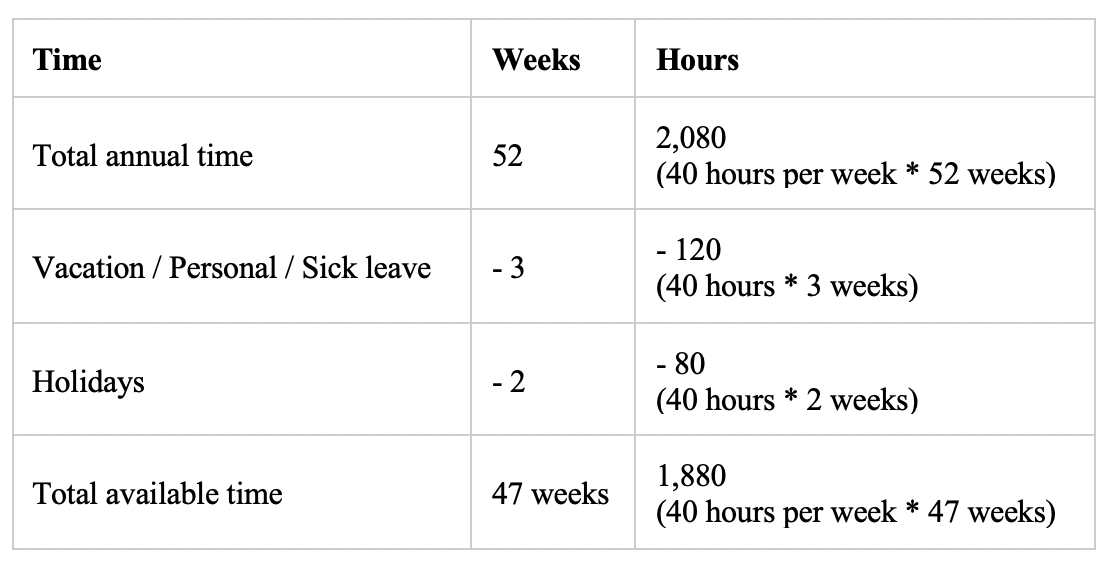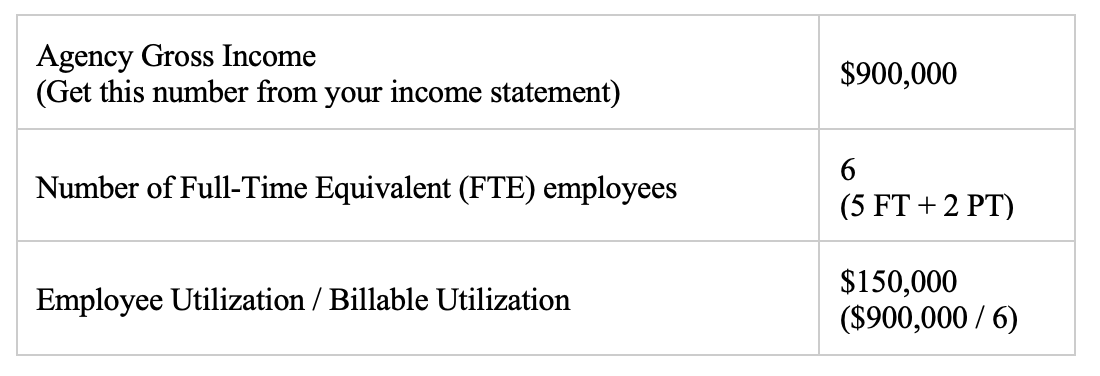A Guide to Calculating Employee Utilization
Your employee utilization rate (sometimes referred to as billable utilization) tells you how much of your employees’ time is spent on revenue-earning activities. This measure provides insight into whether your employees are focused on billable client work, or sitting around sipping coffee. More accurately, your employee utilization rate is defined as the percentage of billable hours out of total hours worked.
Utilization is an important Agency KPI, and for good reason: it’s due in part to the uniqueness of the agency business model. Like other agencies, your marketing agency operates as a reseller; i.e., you buy time in bulk (employee salaries) and then resell that time at a higher rate to clients. Agency profitability is driven by your ability to resell time at a higher rate. Yes, this means that everyone in your agency should track their hours. No, you should not start charging clients by the hour. Tracking employee utilization simply helps you understand how well you are utilizing your most important asset: people.
Calculating Employee Utilization
There is a simple formula to calculate employee utilization:
(Number of billed hours) / (Total available hours)
Let's look at an example to figure out how you would calculate utilization for an employee in your agency.
Say your agency does a great job of timekeeping. Your next step is to look at your time tracking software, and determine the number of hours this employee billed out work to clients in the last year. To keep the math simple, let's say that your agency billed this person out 1,100 hours in the past year.
Your employee utilization calculation would then look something like this:
(1,100/1,880) X 100 = 58%
Utilization rates will vary across the agency; for instance, account people will have a much higher utilization rate than admin folks, who generally don't do much client-billable work. The formula above is the academic way to calculate staff utilization. However, this calculation is tough to do in the real world—after all, people don't do a great job of tracking time. Additionally, the formula does not account for the realities of tracking time accurately, i.e., delivering above-and-beyond project scope. In other words, many agencies fail to adjust billing when there are project scope changes.
Experience has shown that the most realistic way to calculate agency utilization is to divide your Agency Gross Income (AGI) by the number of employees you have on staff. As a reminder, your AGI is your Total Revenue - Cost of Goods Sold.
Here's an example to help you think through this idea.
Full disclosure, I set this example up so it would hit $150,000.
In general, this number is a good benchmark for your agency. When we perform this real-world calculation (as opposed to the academic calculation), we tend to call it billable utilization. The other benefit to this calculation is that it accounts for everyone in the agency. In other words, you get to see how much each person is contributing to agency billings on average. When your billable utilization starts falling below $120,000, it's a good signal that you're not charging enough for your services; alternatively, you may be over-delivering on client work (usually due to scope creep).
Effective Hourly Rate
The effective hourly rate determines how much you are making from your clients on an hourly basis. All agencies have hourly rates, even when they don't charge by the hour. For instance, you might bill out your agency services at a blended rate of $150 an hour, while the client just sees $4,500 (or whatever you charge) for one of your packaged services. The funny thing about $150/hour is that most agencies don't earn that rate because they don't adjust pricing in accordance with scope creep.
Here's how to calculate your effective hourly rate using the examples above. Let’s take your AGI of $900,000. You also have 6 FTE employees working 47 weeks a year, giving you 11,280 hours per year. Divide this number into your AGI, and you'll get an effective rate of about $80/hour. This calculation is sometimes referred to as the realization rate. Try this calculation in your own agency. It's an interesting look at billable utilization on an hourly basis.
How to Improve Employee Utilization
The root cause of low employee utilization or low billable utilization typically falls into two categories. These are (1) underpricing and (2) overdelivering of agency services. The easiest way to fix both issues is to embrace a culture of tracking time. Once you begin tracking time, you will gain insight into how and where you are using your resources. You will begin to see how long it takes to deliver your services. You may find that your past estimates were incorrect, causing you to underprice your services.
With a reseller business model, time is how your business creates value in the marketplace. The first step to profitability starts with ensuring those hours are being used to generate revenue (i.e., billable) and not sitting idle. Note that tracking utilization isn’t just about tracking how productive your team is—it’s primarily about recognizing if you have enough revenue-earning work available, the right-sized team to handle it, and effective systems in place to do the work efficiently.
Check out our Agency Ops service if you're interested in learning more about how to calculate utilization, and other important KPIs for your marketing agency.



